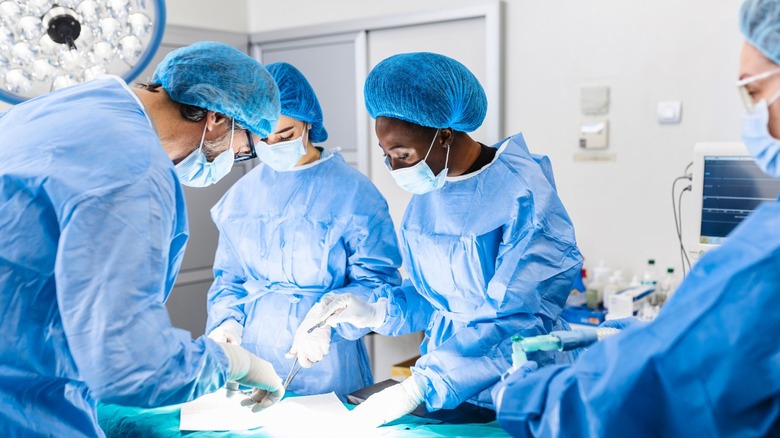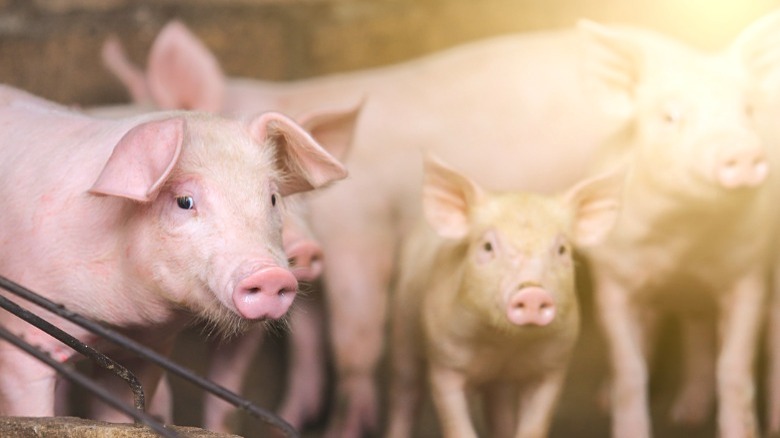How Pig To Human Heart Transplants Work
The idea of organ transplantation dates back thousands of years and transcends various cultures, according to History. While brilliant minds have pondered these thoughts for that long, it wasn't until the last century that theories became a viable reality. These days organ transplants are considered by some to be fairly routine procedures, with 39,000 transplants being performed in 2020 alone, according to the government website Organ Donor. Though transplants are somewhat common these days, that doesn't mean that they are simple or easy to perform.
People requiring new organs often have to wait for a match to come available, and even then there are no guarantees. Unfortunately according to TIME, 8,000 people die in the U.S. each year waiting for a transplant match. There are a few reasons for this, but the shortage of viable organs available for transplant is arguably the most problematic. But what if instead of waiting for organs supplied by donors, we could manufacture the organs we needed instead? While it sounds like something out of a sci-fi novel, just over a week into 2022 humanity took a huge step closer to making it a reality.
Are pigs the answer?
In January 2022, a man named David Bennet became the first human to successfully have a pig heart transplanted into his body. His transplant was unique because it was from a "gene-edited" pig, USA Today reported. The success of this surgery is a culmination of decades of research and experimentation and ultimately could be a game-changer for the field of transplantation. While this is a huge medical breakthrough, many of us are probably wondering exactly how a pig heart can function in a human body.
According to Reuters, pigs have long been considered as a possible source for human transplants because their organs are very similar to ours. You obviously can't pluck an organ out of an animal and pop it into someone — there are diseases and genetic differences to consider. So, to address these problems, a group of scientists at Harvard Medical School used a DNA editing tool called CRISPR to remove harmful genes from a pig's DNA, Time reported. If you remove the non-compatible genes, you then potentially have a usable transplant organ. Though the science is still pretty new, this first successful transplantation could revolutionize how we do organ transplants moving forward.

